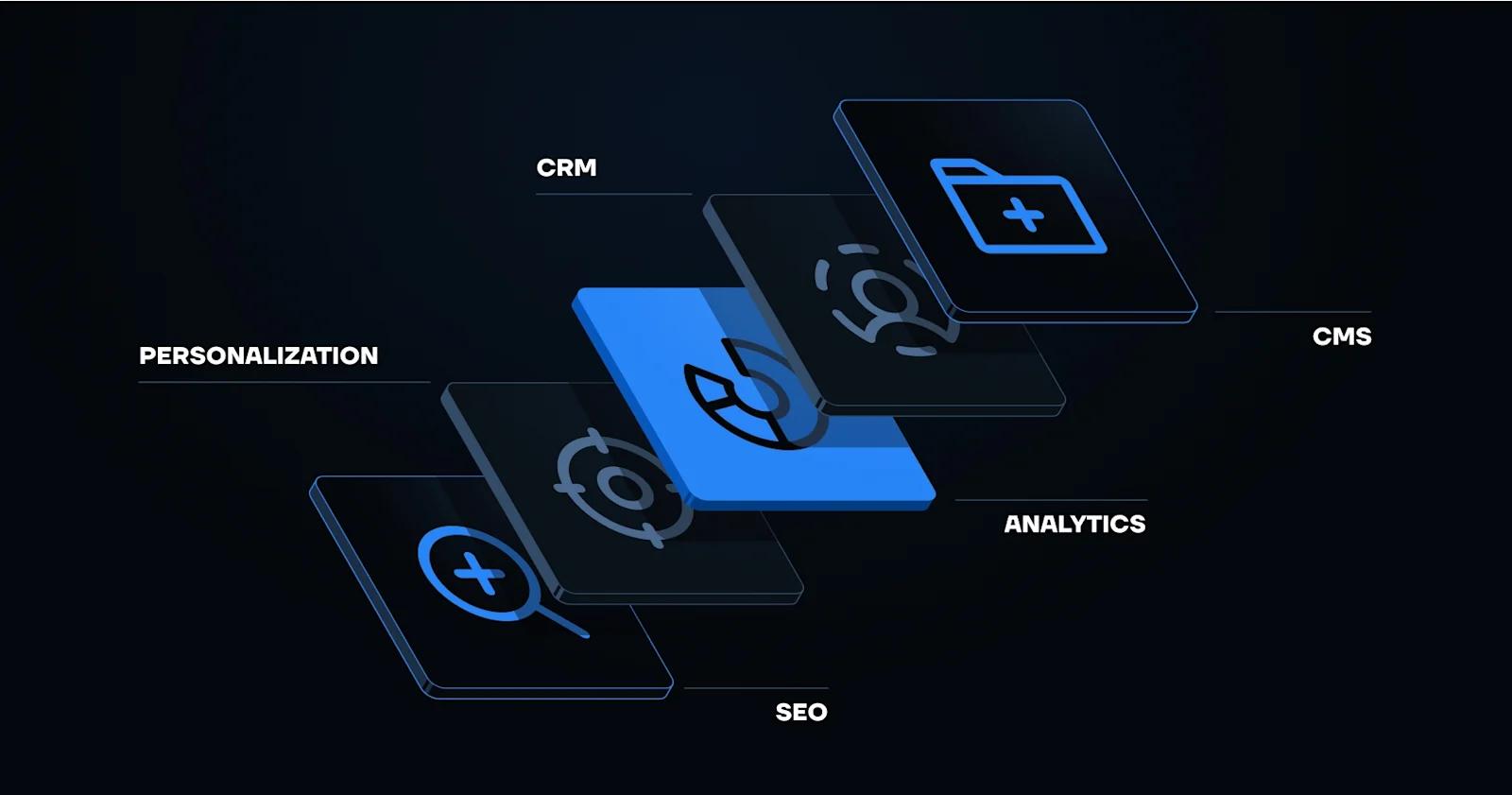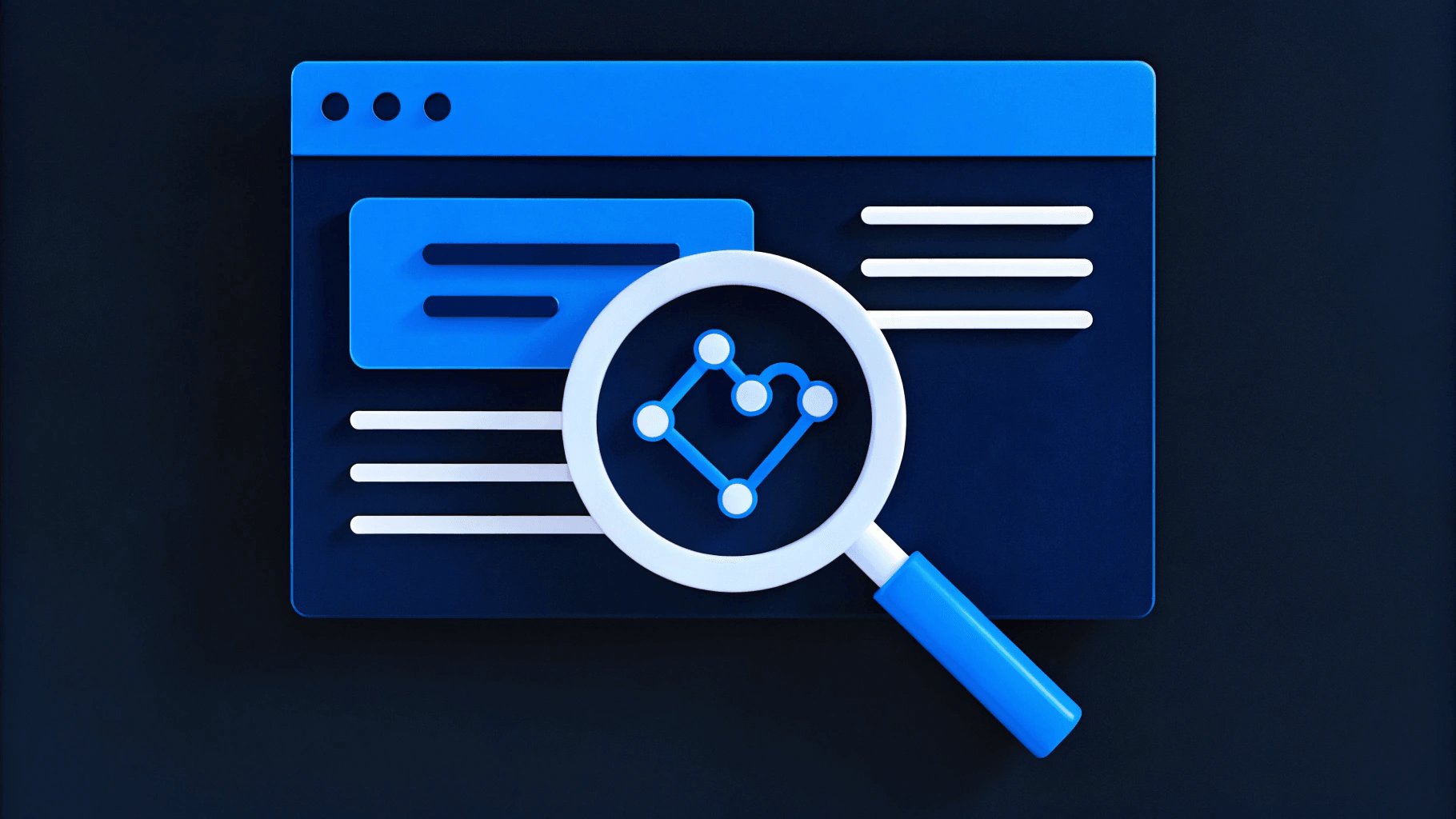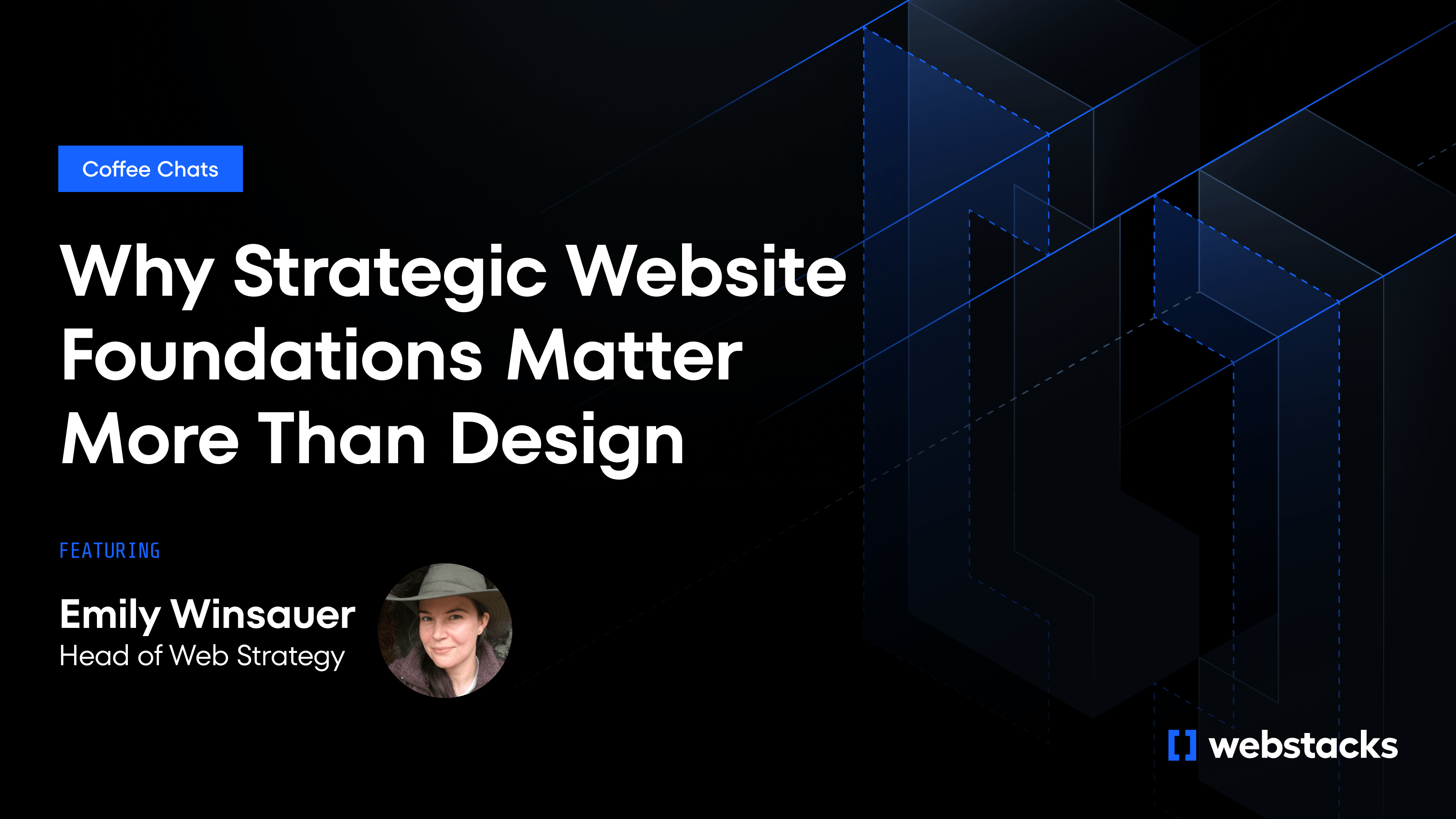Most B2B teams don’t set out to build a bloated tech stack, it just happens.
One platform gets added to fix a specific problem. Another to fill a gap in reporting. A third to launch a quick campaign.
Over time, you end up with a pile of tools that don’t connect, workflows that don’t scale, and a marketing team that spends more time managing systems than running strategy.
A modern marketing tech stack should help your team move faster. It should give marketers more control, not more complexity. But too many stacks are built around individual tools instead of team needs, resulting in slower campaigns, siloed data, and a constant reliance on devs to get things live.
In this guide, we’ll walk through what a high-performing B2B marketing tech stack looks like in 2025. You’ll get the full list of tools worth investing in and more importantly, how to make sure they actually work together.

What Should Be in Your B2B Marketing Tech Stack in 2025?
A modern B2B tech stack contains systems that play well together, support your strategy, and let marketers ship without friction. Here’s what that looks like:
CMS
Your content management system should be easy to use for everyone.
If it’s hard to update or overly reliant on developers, you’re going to fall behind. A modern CMS should make it easy to create, edit, and publish structured content across the site.
For growing teams, headless CMS platforms are becoming the default. Unlike traditional systems, headless platforms separate content from presentation. That gives developers the freedom to build custom frontends, while marketers get tools to manage and launch content quickly.
The key isn’t just going headless. You also need a modular content model that supports flexibility and reuse. That way, your team isn’t starting from scratch every time a new campaign rolls out.
What to look for:
- Structured content types and reusable blocks
- Role-based permissions and workflows
- Integrations with personalization and analytics tools
Recommended tools: Contentful, Sanity, DatoCMS
Learn more about the process of migrating to a headless CMS in our iTrustCapital customer story.
Website Platform
Your website platform is the foundation everything else sits on. If your platform can’t support fast changes and component reuse, it’ll become a bottleneck.
Many B2B teams are shifting to composable website architecture using frameworks like Next.js. Paired with deployment platforms like Vercel or Netlify, this setup allows developers to build modular systems that scale and marketers to operate more independently post-launch.
This shift lets teams ship faster, avoid rigid redesign cycles, and treat the site like a living product instead of a static asset.
What to look for:
- Component-based frontend frameworks (React, Next.js)
- Git-based workflows and CI/CD pipelines
- Compatibility with headless CMSs and APIs
Recommended tools: Vercel, Netlify, Next.js
Marketing Automation
Automation helps you save time and scale personalized experiences. Your automation platform should help you segment audiences, nurture leads based on behavior, and trigger actions across channels.
What matters most is how well it integrates with the rest of your stack.
A great automation tool becomes the connective tissue between your CMS, CRM, and analytics, not a siloed system running its own playbook.
What to look for:
- Strong native integrations or open APIs
- Visual workflows for campaign logic
- Real-time triggers and behavioral tracking
Recommended tools: HubSpot, Marketo, Customer.io
CRM and CDP
Your CRM should serve as a shared source of truth across marketing, sales, and customer success. But that only works if it’s populated with clean data and integrated deeply with your site and automation tools.
Adding a CDP (customer data platform) brings even more clarity. CDPs help unify first-party data across tools and touchpoints, making it easier to personalize campaigns and track impact.
What to look for:
- Unified customer profiles and real-time sync
- Data enrichment and deduplication features
- Integration with both upstream and downstream tools
Recommended tools: Salesforce, Segment
Analytics and Attribution
Measuring performance allows you to get visibility into what’s working, where leads are coming from, and which efforts are driving revenue.
Basic setups like GA4 are just the start. Consider tools that support multi-touch attribution, event tracking, and funnel analysis across multiple systems.
What to look for:
- First-party tracking capabilities
- Flexible reporting and custom dashboards
- Integrations with ad platforms and CRMs
Recommended tools: GA4, Heap, Dreamdata
Personalization and ABM
Once the foundation is in place, layering in personalization can significantly lift conversion. Account-based tools help you serve the right content to the right people at the right time.
These tools work best when they’re tied directly to your CMS and automation flows. The more modular your setup, the easier it is to personalize content at scale.
What to look for:
- Real-time content swapping and audience targeting
- Firmographic and behavioral data integration
- Page-level personalization without dev work
Recommended tools: Mutiny, Metadata, 6sense

What are the Biggest Problems When Building a Marketing Tech Stack?
When marketing tech stacks start to break down, the tools usually get blamed first. But the deeper issue is structural.
Most B2B organizations build their stack in a linear, reactive way. A new tool gets added to solve a specific need such as email automation, campaign landing pages, lead scoring. But rarely is the broader system considered. Over time, this results in a tech stack that reflects how tools were purchased, not how teams actually work.
Disconnected tools Lead to Disconnected Workflows
When each platform manages its own data and user access, collaboration becomes painful. Marketers can’t see what sales sees while developers don’t know how campaigns are built. Analytics lives in its own world, tied together with fragile workarounds.
Even basic tasks such as launching a new landing page or updating a CTA require cross-functional coordination that slows everything down.
Linear Processes Create Bottlenecks
In traditional marketing orgs, everything happens in sequence: strategy → copy → design → development → QA → launch. Every phase waits for the one before it to finish. If priorities shift midstream, the whole flow collapses.
This linear mindset bleeds into the stack itself. Instead of one flexible system, you end up with handoffs between isolated tools and teams blocked by access or technical constraints.
The fix isn’t throwing more tools at the problem. It’s rethinking how those tools connect and whether they support a more agile way of working.
A Composable Tech Stack Is the Modern Answer
The problem with most B2B tech stacks is the way they’re stitched together.
But in a composable stack, every part of your marketing infrastructure is modular.
Your CMS doesn’t assume anything about your frontend. Your personalization engine isn’t hardcoded into specific pages. Every system is designed to work independently but also integrate cleanly when needed.
At Webstacks, we’ve helped many B2B companies build composable websites. And we also build full marketing systems that let non-technical teams ship campaigns and evolve the site independently. So we have a good understanding of what composability is really about and its benefits for modern companies.
Why Composability Works Better for Modern B2B Teams
B2B marketing isn’t static. If your website and tech stack can’t keep up, you're stuck in the “request → wait → release” cycle that slows everything down.
Composable systems because components are built once, then reused and adapted across pages, audiences, and formats.
The same testimonial block that shows up on a homepage can be dropped into a landing page, personalized for ABM, or styled differently for a product vertical. And it doesn’t need new code every time.
When you need to replace a tool in a composable stack, you don’t have to rebuild the entire site. If you want to swap out your personalization engine, the change doesn’t ripple out and break five other systems.
That level of resilience is a massive win for fast-moving teams.
How to Choose the Right Tools
Here's how to build a marketing tech stack with composability in mind:
Prioritize Workflow Alignment
Before implementing a new tool, map how your team actually executes marketing—from campaign planning to launch to iteration. Select tools that reinforce those workflows rather than forcing you to adopt rigid, predefined processes. If your stack doesn’t reflect how your team works, it will eventually become a blocker.
For example, Webstacks uses discovery sessions with our clients to identify content bottlenecks, campaign inefficiencies, and cross-team dependencies before recommending any platforms.
Look for API-First Architecture
Tools that expose clean APIs integrate more easily into a composable system. API-first platforms enable interoperability between systems, give developers more control, and prevent brittle point-to-point connections.
This approach reduces long-term technical debt and ensures that your stack can evolve without requiring large-scale rework.
A flexible integration layer also allows marketing teams to automate key tasks without needing custom development every time.
Avoid Overly Centralized Platforms
All-in-one marketing suites promise simplicity but often create long-term complexity. These platforms may bundle multiple functions (CMS, CRM, automation, analytics) but at the cost of flexibility.
Composable stacks avoid this by choosing specialized tools for specific functions. The modularity lets you scale individual layers of the stack without affecting the entire system. It also reduces lock-in and makes vendor replacement less disruptive.
Plan for Scalability and Change
A good tech stack supports growth without constant rebuilds. As your site evolves, your tools should accommodate new channels, workflows, and team structures. So you should prioritize platforms with strong documentation, active ecosystems, and modular configuration options.
Webstacks builds systems with long-term adaptability in mind. From the initial architecture to how components are structured, every decision is made with future scale in view. The goal isn’t just launch but longevity.
Build a B2B Marketing Tech Stack that Accelerates Your Team
The purpose of your marketing tech stack is to create leverage. When systems are composable and tailored to how your team actually works, they stop being a source of friction and start becoming a force multiplier.
The shift to composable architecture gives marketers more control and builds for long-term scale instead of short-term fixes.
Whether you’re optimizing what you already have or starting fresh, the structure of your stack will determine how fast you can move.
Webstacks partners with B2B marketing teams to modernize their digital infrastructure using composable websites, modular design systems, and scalable content models. We help marketing, design, and development work as one system instead of three siloed functions.
If your tech stack feels more like a burden than a system, we can help.




